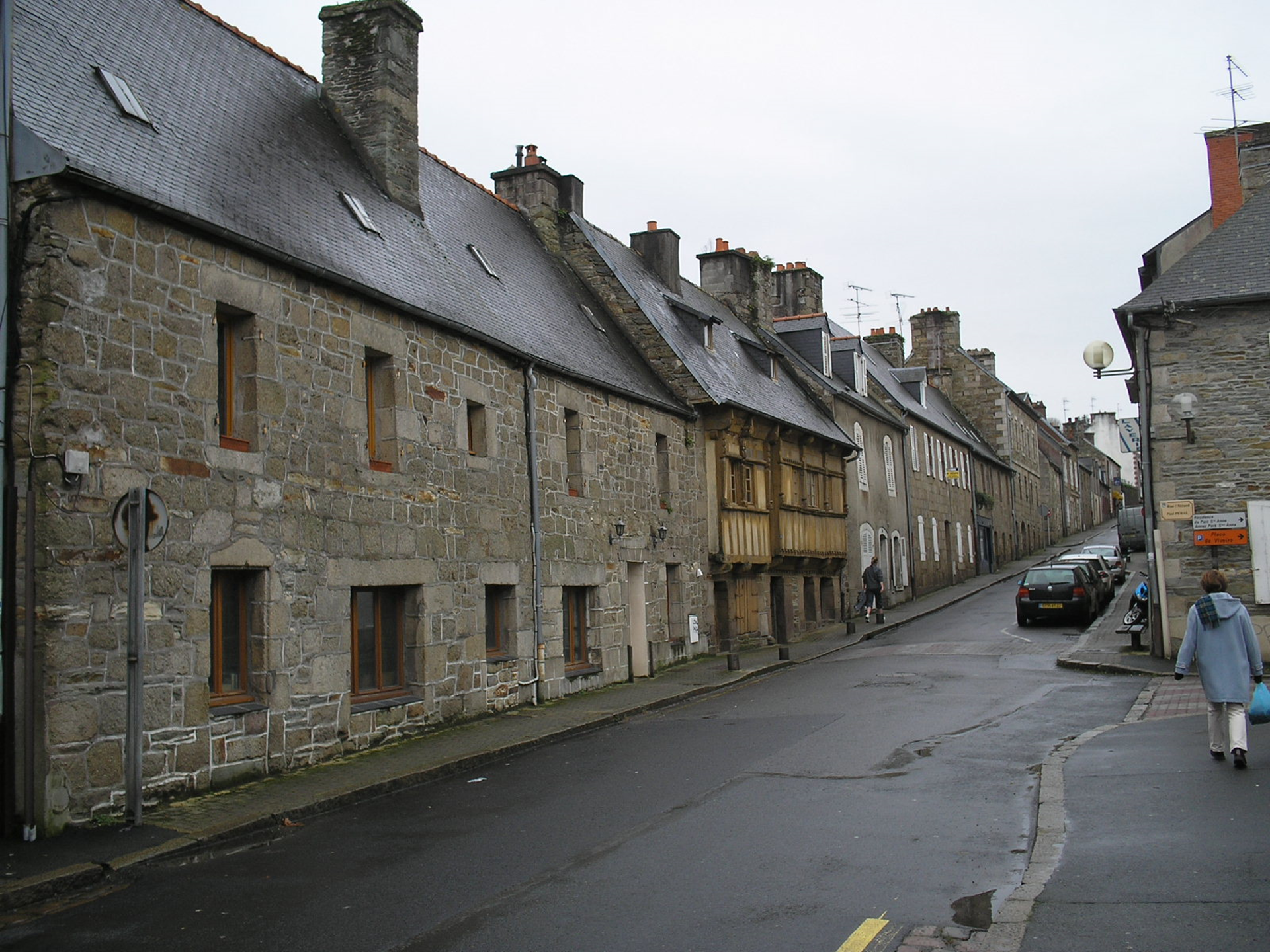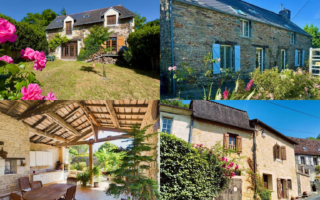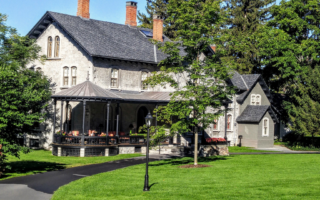La Bise, Le Mistral: France’s famed winds

France’s world-famous winds have shaped the country’s landscape, architecture, culture, lifestyle – and even fashion, says Daniela Harris…
Bordered by four seas (North Sea, Channel, Atlantic and Mediterranean) and by three mountain ranges (Alps, Jura and Pyrénées), France is quite literally the perfect storm for a changeable climate, driven by its variable winds. Its reputation for being a windy country is well known and while its breezes can be formidable forces in winter, they provide welcome relief at the height of summer. The country’s landscape has been shaped by its winds, as has the architecture, leisure, the arts and even fashion. These winds have their own unique personalities and histories. Here is our gust-by-gust guide.
WHERE THE WIND BLOWS
La Bise (the kiss) is an intense but dry affair that blows both very hot and cold. La Bise hails from the landmass of central Europe, blowing across eastern France from the Alps. The only thing that stops the kiss’s path is the Atlantic weather system and the mountainous Massif Central. During summer, this wind is perfect for drying your laundry, prompting the local saying avec la bise, lave ta chemise (with the bise, wash your shirt).
Le Mistral. By far the most famous of France’s winds is Le Mistral, an extension of La Bise that runs south down the Rhone valley to central Provence, and can last for weeks. With speeds recorded of up to 90 miles an hour, Le Mistral, meaning ‘masterly’, certainly lives up to its powerful reputation. However, it is this very wind that blows across Provence, the Côte d’Azur and the easterly parts of Languedoc-Roussillon to create the region’s extraordinary light, the freshest of air and uncommonly bright days that attract so many visitors.
Le Tramontane means ‘beyond the mountains’ and is referenced as early as the 13th century by Marco Polo. More recently, the band Foreigner wrote a track Tramontane, referring to the wind’s foreign credentials. This mischievous wind manifests as very powerful, sudden gusts of wind that seemingly appear out of nowhere across the southwest of France. It is a northerly wind created by the bottleneck between the Alps and Mediterranean. Across Occitanie, many a street and square are named after this mischief-making wind.
Le Marin. Not as powerful as its brother the Mistral, as the name suggests, the Marin also derives from the sea (the Gulf of Lion), and is a warm, wet wind that creates rain in central France. It also helps to push back the Tramontane wind, which blows over the Pyrénées and together they create a cloudless airspace above the Aude and Pyrénées-Orientales.
BREEZE BLOQ ARCHITECTURE
Throughout the southwest of France, you can see large, solid stone country houses (known as mas), which were built orientated in a southerly direction. This was done not only so they faced the sun, but also to protect their inhabitants against the wind. In the Charente department and throughout the old Poitou- Charentes region you will find large stone houses with a south-facing aspect and very few windows in the north- facing wall. Called Charentaise, these were also designed to keep out the wind. They tend to be less grand than a maison de maître, but are rectangular in shape and have very satisfying symmetrical layouts.
The shutters of French properties (volets from the word vol, to fly) are there to protect and insulate homes from the sun, but also to provide protection from the wind. This quintessentially French feature, which adds character to many a French property, may not have existed were it not for the breeze.

Old stone houses Lannion Brittany France-Photo: Joel Abroad/flickr
LIVING THE HIGH LIFE
Bell towers in France are typically built with an opening to allow the wind to pass through and add to the distinctively French look of villages and towns throughout the country, while the old stone tower windmills that abound in France also add to that pastoral idyll. No mention of French windmills can be made, however, without talking about the most famous windmill of all: the Moulin Rouge. Do you know its origins? In 1809, two windmills owned by two brothers sat on the site of Montmartre, which at the time was farmland and vineyards outside Paris’s city walls. One mill produced flour, the other ground spices and crushed onions. During the French Revolution, one of the brothers ended up meeting a gruesome end involving the sails of the windmill. This prompted the other brother into a career change and he turned his mill into a popular watering hole called a guingette – a term used today to describe an open-air venue serving drinks. Guingette refers to the white wine produced there from the local grapes, which was cheap as it wasn’t taxed, being outside the city walls.
As its popularity grew, it became a space for dancing known as the Moulin de la Galette (named after a popular bread made from the flour of the mill) – depicted famously by Renoir, Toulouse-Lautrec and Picasso. By the end of the 19th century, it had become the place we know and love today.
View this post on Instagram
With this natural raw energy, it is unsurprising that there are plenty of leisure activities that harness the wind. In April/May you can come and enjoy Le Mondial du Vent – a thrilling annual competition between the international stars of windfoil, windsurfing and kite surfing. With an average of over 300 windy days a year, the beaches of Leucate and La Franqui in the Aude are ideally positioned to host the event. Throughout the year, even when the wide sandy beaches are empty, you’ll see windsurfers practising their craft along that stretch of Mediterranean coastline.
About 750 official sites offer paragliding in France and over 150 paragliding schools (look out for FFVL certification – Fédération Francais de Vol Libre– and check out your local tourist board for information on where to go). They are concentrated over the Alps, Pyrénées and Provence. All these locations offer stunning and dramatic landscapes, châteaux and turquoise lakes to paraglide over.
In 1783, the Montgolfier brothers famously launched the first unmanned hot-air balloon flight. A few weeks later, Louis XVI decreed that convicts be forced into being the first pilots but a couple of French daredevils, the Marquis François Laurent d’Arlandes and Pilâtre de Rozier petitioned successfully for the ‘honour’. Today, the Grand Est Mondial Air Ballon is the biggest hot- air ballooning festival in Europe, held biannually in Lorraine. A huge event lasting more than 10 days, it is well worth a visit.
The winds of France have shaped the way of life here, but we also have them to thank for the prolonged days of sunshine in the south. While central Europe bakes during the summer, in France people can enjoy the weather with a natural breeze to cool them down. However, the wind doesn’t just lower the temperature, it also blows away pollution and dust in its wake. Without it, that distinctive clear light that has inspired generations of French painters and draws tourists back to France year after year would not exist.
Daniela Harris is an agent with Beaux Villages estate agency in France.
Tel: 0800 270 0101 (Freephone from the UK)
0033 (0)8 05 69 23 23
Looking for more French property advice?
The unique mix of legal, financial and tax advice along with in-depth location guides, inspiring real life stories, the best properties on the market, entertaining regular pages and the latest property news and market reports makes French Property News magazine a must-buy publication for anyone serious about buying and owning a property in France.
Lead photo credit : In Provence, where the famous Mistral blows, solid stone houses are built to protect against the wind, Photo: Shutterstock
Share to: Facebook Twitter LinkedIn Email
More in Provence-Alpes Cote d'Azur



